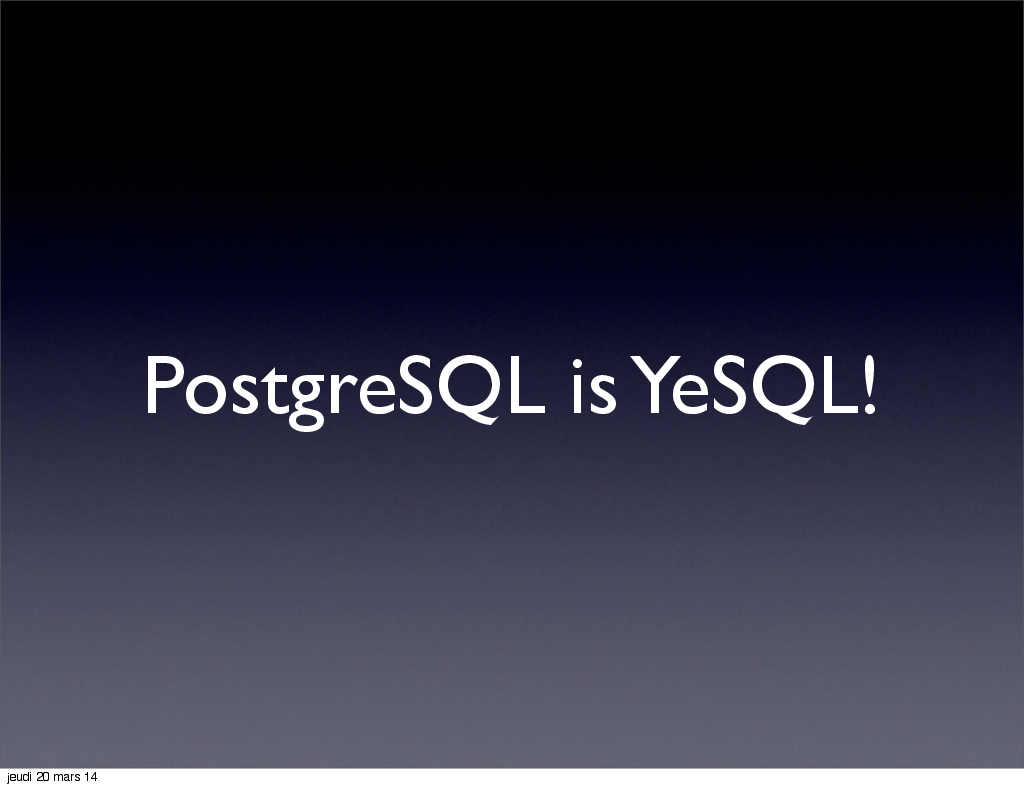
Next month, Postgres Open 2014 is happening in Chicago, and I’ll have the pleasure to host a tutorial about PostgreSQL Extensions Writing & Using Postgres Extensions, and a talk aimed at developers wanting to make the best out of PostgreSQL, PostgreSQL for developers:
The tutorial is based on first hand experience on the PostgreSQL Extension Packaging System both as a user and a developer. It’s a series of practical use cases where using extensions will simplify your life a lot, and each of those practical use case is using real world data (thanks to pgloader).

En début de semaine se tenait le PHP Tour 2014 à Lyon, et j’ai eu le privilège d’y être invité afin de présenter comment Utiliser PostgreSQL en 2014.
À l’heure où le NoSQL passe de mode doucement, il est temps de se poser les bonnes questions vis à vis des technologies de bases de données à utiliser, comment et pourquoi. PostgreSQL entre de plein droit dans la case des SGBD relationnels classiques, aussi nous commencerons par étudier ce que de ces outils apportent.

Last week some PostgreSQL users, contributors and advocates have organized a really great conference in Stockholm, Sweden, where I had the please to give the following talk:
*PostgreSQL is YeSQL!* Nordic PostgreSQL Conference The conference was very well put together and the occasion to meet with plenty of well known PostgreSQL friends and newcomers to the community too. If you were there, I hope you had as much of a good time than I did!

In our previous article Aggregating NBA data, PostgreSQL vs MongoDB we spent time comparing the pretty new MongoDB Aggregation Framework with the decades old SQL aggregates. Today, let’s showcase more of those SQL aggregates, producing a nice histogram right from our SQL console.

When reading the article Crunching 30 Years of NBA Data with MongoDB Aggregation I coulnd’t help but think that we’ve been enjoying aggregates in SQL for 3 or 4 decades already. When using PostgreSQL it’s even easy to actually add your own aggregates given the SQL command create aggregate.
